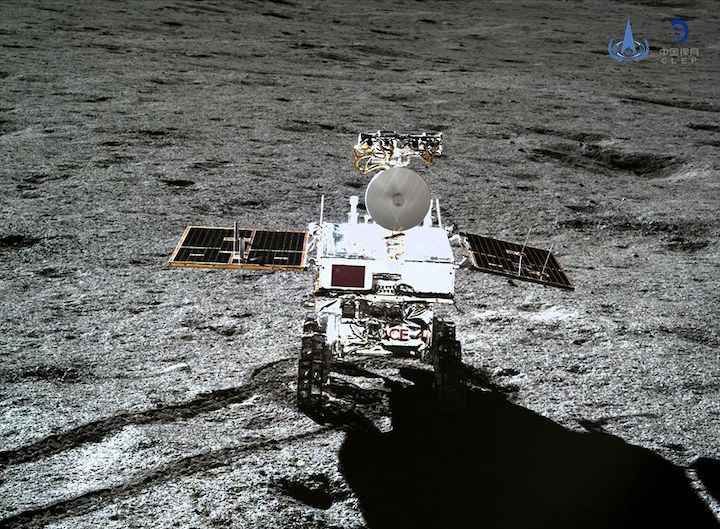31.12.2021
Plans incorporate landers, orbiters, rovers and even hopping probes.

China has formally approved three missions targeting the south pole of the moon, with the first to launch around 2024.
The missions dubbed Chang'e 6, Chang'e 7 and Chang'e 8 will launch across the 2020s, each with different goals and an array of spacecraft. The trio make up the so-called fourth phase for the Chinese lunar exploration program, which most recently landed on the moon last December with a sample-return mission dubbed Chang'e 5.
Wu Yanhua, deputy head of the China National Space Administration (CNSA), told China Central Television (CCTV) in a recent interview that the three missions had been approved.
Chang'e 7 will be the first to launch; Wu did not provide a timeline, but previous reporting indicates a hoped-for launch around 2024, with the mission to include an orbiter, a relay satellite, a lander, a rover and a "mini flying craft" designed to seek out evidence of ice at the lunar south pole.
The various component spacecraft will carry a range of science instrumentsincluding cameras, a radar instrument, an infrared spectrum mineral imager, a thermometer, a seismograph and a water-molecule analyzer; the mission will tackle goals including remote sensing, identifying resources and conducting a comprehensive study of the lunar environment. China's largest rocket, the Long March 5, will be required to launch the 18,000 pounds (8,200 kilograms) mission.
Next will come Chang'e 6, which was first envisioned as a backup for the Chang'e 5 sample-return mission. The new mission will seek to build on the success of its predecessor by collecting the first ever rock samples from the moon's south pole and delivering them to Earth. China has said that the mission will also carry science payloads being developed in France and Italy, and potentially Russia and Sweden, too.
Chang'e 8 will launch later this decade and will be a step toward establishing a joint International Lunar Research Station (ILRS) with Russia and potentially other partners. The mission is expected to test technology for using local resources and manufacturing with 3D printing, according to earlier Chinese press statements.
"The main purpose of these three missions is for China to build the basic model of a lunar research station in cooperation with Russia, with China taking the lead," Wu told CCTV. "The construction of the station can lay a solid foundation for us to better explore the lunar environment and resources, including how to peacefully use and develop lunar resources."
The ILRS plan includes development of a robotic base which can be later expanded to allow astronauts to make long-term stays on the lunar surface in the 2030s. The project is separate from the U.S-led Artemis program which seeks to return astronauts to the moon in the coming years. Artemis 1, an uncrewed mission around the moon, is currently targeting a launch in spring 2022.
China is currently operating the Chang'e 4 lander and the Yutu 2 rover on the far side of the moon; the pair made the first-ever landing on the lunar far side in 2019. Yutu 2 is currently investigating rocks on the horizon dubbed a "mystery hut" by a Chinese space outreach channel.
Quelle: SC

